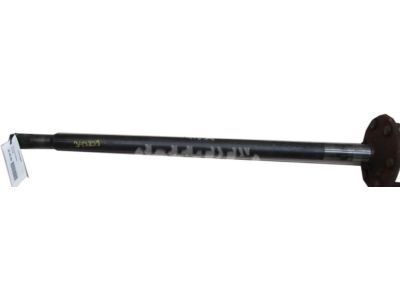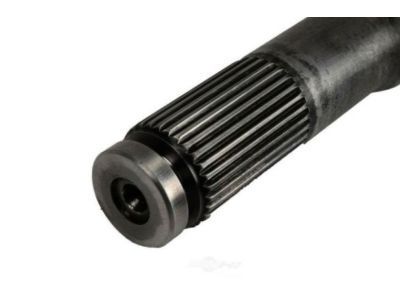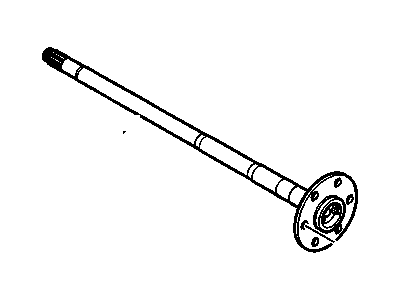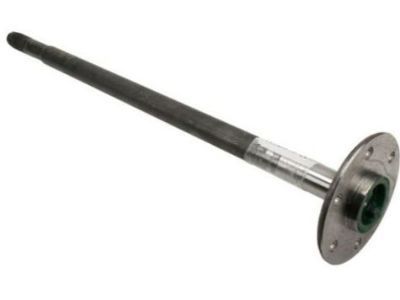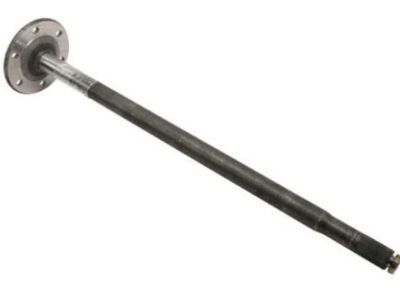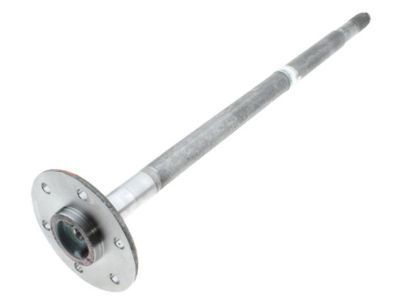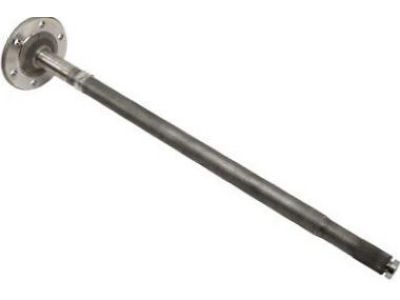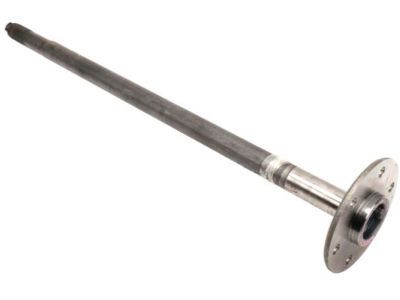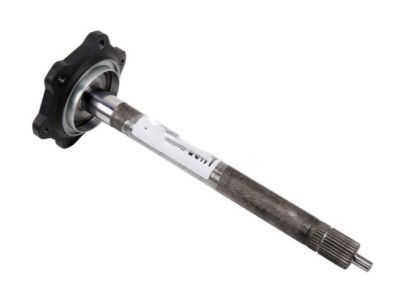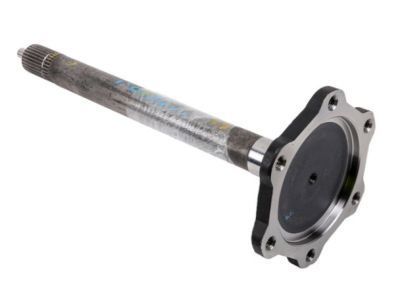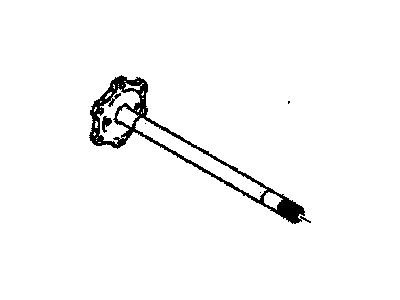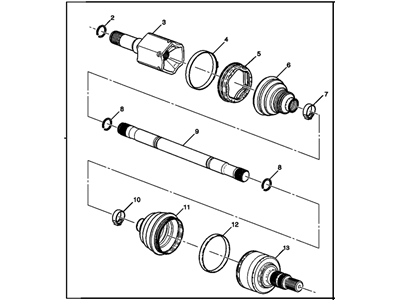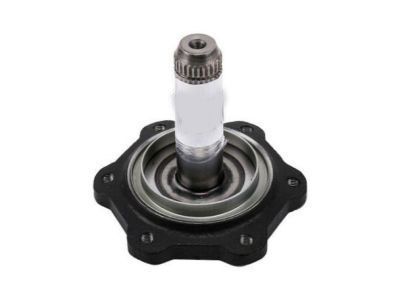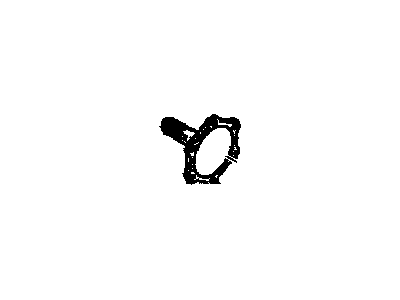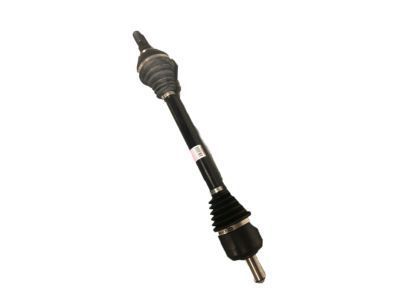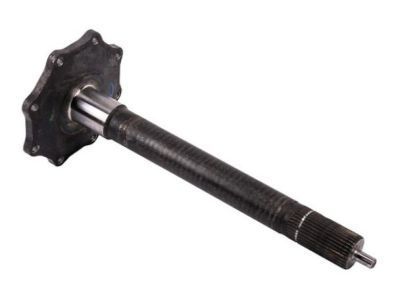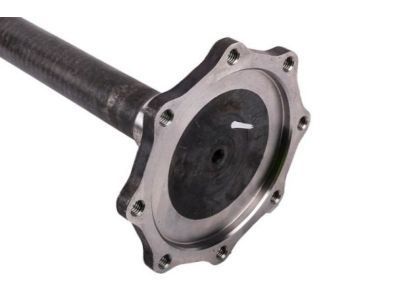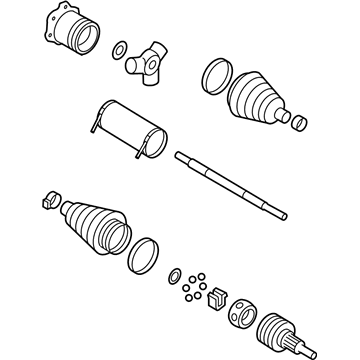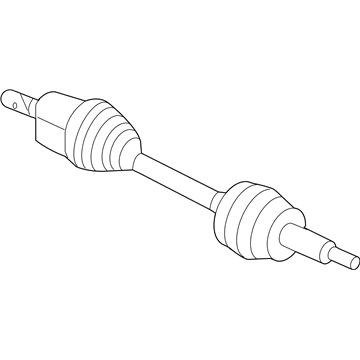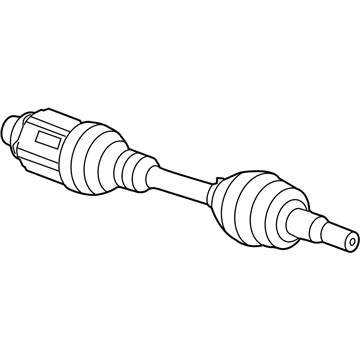
My Garage
My Account
Cart
Genuine Cadillac Axle Shaft
Car Axle Shaft- Select Vehicle by Model
- Select Vehicle by VIN
Select Vehicle by Model
orMake
Model
Year
Select Vehicle by VIN
For the most accurate results, select vehicle by your VIN (Vehicle Identification Number).
307 Axle Shafts found
Cadillac Rear Axle Shaft
Part Number: 22874951$505.23 MSRP: $863.89You Save: $358.66 (42%)Ships in 1-3 Business DaysProduct Specifications- Other Name: Shaft, Rear Axle ; Shaft, Rear Axle Drive; Axle Shaft
- Position: Rear
- Replaces: 15286380
- Product Specifications
- Other Name: Shaft, Rear Axle; Axle Shaft
- Position: Rear
- Replaces: 15812663
Cadillac Rear Axle Shaft
Part Number: 23199121$217.33 MSRP: $371.63You Save: $154.30 (42%)Ships in 1-2 Business DaysProduct Specifications- Other Name: Shaft, Rear Axle; Axle Shaft
- Position: Rear
Cadillac Front Drive Axle Inner Shaft
Part Number: 22876133$353.61 MSRP: $589.88You Save: $236.27 (41%)Ships in 1-2 Business DaysProduct Specifications- Other Name: Shaft, Front Drive Axle Inner; Inner Shaft, Intermed Shaft, Output Shaft
- Position: Front Inner
Cadillac Front Wheel Drive Shaft Assembly
Part Number: 22743794$233.42 MSRP: $433.70You Save: $200.28 (47%)Product Specifications- Other Name: Shaft Assembly, Front Wheel Drive ; Shaft, Front Wheel Drive Axle; Axle, Axle Assembly
- Position: Front
- Replaces: 20861589
Cadillac Front Drive Axle Inner Shaft
Part Number: 22876135$318.90 MSRP: $762.45You Save: $443.55 (59%)Ships in 1-2 Business DaysProduct Specifications- Other Name: Shaft, Front Drive Axle Inner; Flange, Inner Shaft, Intermed Shaft, Output Shaft
- Position: Front Inner
Cadillac Front Wheel Drive Shaft Assembly
Part Number: 22743796$226.42 MSRP: $441.36You Save: $214.94 (49%)Product Specifications- Other Name: Shaft Assembly, Front Wheel Drive ; Shaft, Front Wheel Drive Axle; Axle, Axle Assembly
- Position: Front
Cadillac Rear Wheel Drive Universal Joint Shaft Assembly (RH Proc)
Part Number: 22873444$237.63 MSRP: $406.33You Save: $168.70 (42%)Product Specifications- Other Name: Shaft Assembly, Rear Wheel Drive Universal Joint (Rh Proc) ; Shaft, Rear Axle Drive; Axle Assembly
- Position: Rear Passenger Side
- Replaces: 15851726, 10350598, 22762284, 25941373
Cadillac Front Drive Axle Inner Shaft
Part Number: 20768561$222.66 MSRP: $368.51You Save: $145.85 (40%)Product Specifications- Other Name: Shaft, Front Drive Axle Inner ; Shaft, Front Axle; Axle Assembly, Inner Shaft, Output Shaft
- Position: Front Inner
Cadillac Shaft Assembly, Front Whl Drv Half
Part Number: 84842044$307.12 MSRP: $508.32You Save: $201.20 (40%)Product Specifications- Other Name: Axle Assembly
- Position: Front
- Replaced by: 85083496
Cadillac SHAFT ASM-FRT WHL DRV HALF
Part Number: 85126785$210.55 MSRP: $584.72You Save: $374.17 (64%)Product Specifications- Other Name: Axle Assembly, Axle Shaft Assembly
- Replaced by: 85775028
- Replaces: 15868120, 26069242, 20875738
Cadillac Shaft Assembly, Front Whl Drv Half
Part Number: 84628596$574.21 MSRP: $1107.07You Save: $532.86 (49%)Product Specifications- Other Name: Axle, Axle Assembly
- Position: Front
- Replaces: 22796199, 84402746, 13228208, 22870111
Cadillac Shaft Assembly, Front Whl Drv Half
Part Number: 84873209$657.86 MSRP: $1124.92You Save: $467.06 (42%)Ships in 1-2 Business DaysProduct Specifications- Other Name: Axle Assembly, Output Shaft
- Position: Front
- Replaces: 25856606, 22813485
Cadillac Shaft Assembly, Front Whl Drv Half
Part Number: 84628595$567.03 MSRP: $1093.18You Save: $526.15 (49%)Product Specifications- Other Name: Axle, Axle Assembly
- Position: Front
- Replaces: 23157347, 84402745, 13228212, 22796198, 22743588
Cadillac Shaft Assembly, Front Whl Drv Half
Part Number: 84878156$134.83 MSRP: $330.42You Save: $195.59 (60%)Ships in 1-3 Business DaysProduct Specifications- Other Name: Axle Assembly
- Position: Front
- Replaced by: 85738623
- Replaces: 84263500, 84020567, 84263496, 84088518, 84444736, 84609529, 84609578, 84609530
Cadillac Front Driver Side Half, Shaft Assembly
Part Number: 84509594$194.14 MSRP: $331.97You Save: $137.83 (42%)Ships in 1-2 Business DaysProduct Specifications- Other Name: Shaft Assembly, Front Whl Drv Half; Axle, Axle Shaft
- Position: Front Driver Side
- Replaces: 23344343
Cadillac SHAFT-FRT WHL DRV
Part Number: 87821660$37.84 MSRP: $91.64You Save: $53.80 (59%)Ships in 1-3 Business DaysProduct Specifications- Other Name: Output Shaft
- Replaces: 84829191, 84613722, 84781496, 84428311
Cadillac Shaft Assembly, Rear Whl Drv
Part Number: 84856645$254.96 MSRP: $421.99You Save: $167.03 (40%)Product Specifications- Other Name: Shaft Assembly, Rr Whl Drv; Axle Assembly
- Position: Rear
- Replaced by: 85697035
Cadillac Shaft Assembly, Rear Whl Drv
Part Number: 84550229$468.23 MSRP: $800.65You Save: $332.42 (42%)Ships in 1-2 Business DaysProduct Specifications- Other Name: Shaft Assembly, Rr Whl Drv; Axle, Axle Assembly
- Position: Rear
- Replaces: 23117791, 84028742, 84309449
Cadillac Shaft Assembly, Front Whl Drv Half
Part Number: 84877807$192.25 MSRP: $303.86You Save: $111.61 (37%)Product Specifications- Other Name: Axle Assembly
- Position: Front
| Page 1 of 16 |Next >
1-20 of 307 Results
Cadillac Axle Shaft
For superior quality and affordable Cadillac Axle Shafts, consider our website. We proudly present a wide selection of genuine Cadillac Axle Shafts at unbeatable prices. These OEM parts, supported by the manufacturer's warranty, are also eligible for our hassle-free return policy and swift delivery service.
Cadillac Axle Shaft Parts Questions & Experts Answers
- Q: How is power transmitted to the front wheels through the axle shaft, and how to inspect axle shafts on Cadillac Escalade?A:Power is transmitted from the front differential/axle to the front wheels through a pair of driveaxles, with the inner end of each driveaxle bolted to an axleshaft connected to the differential side gears, while the outer end features a stub shaft splined to the front hub and bearing assembly, secured by a large nut. The inner ends are equipped with sliding constant velocity (CV) joints that allow for both angular and axial motion, consisting of a tripot-type bearing and a housing that enables sliding as the driveaxle moves with the wheel. In contrast, the outer ends have ball-and-cage type CV joints, which permit angular movement but not axial, featuring six caged ball bearings between an inner race and the housing. Common symptoms of worn or damaged CV joints include lubricant leaks, a clicking noise during turns, a clunk when accelerating after coasting, and vibration at highway speeds. To check for wear, grasp each axle individually and rotate it in both directions while holding the CV joint housings, feeling for play that indicates worn splines or sloppy joints, and inspect the driveaxle shafts for cracks, dents, and distortion.
Related Cadillac Parts
Browse by Model
ATS Axle Shaft Allante Axle Shaft Brougham Axle Shaft CT4 Axle Shaft CT5 Axle Shaft CT6 Axle Shaft CTS Axle Shaft Catera Axle Shaft Cimarron Axle Shaft Commercial Chassis Axle Shaft DTS Axle Shaft Deville Axle Shaft ELR Axle Shaft Eldorado Axle Shaft Escalade Axle Shaft Fleetwood Axle Shaft LYRIQ Axle Shaft SRX Axle Shaft STS Axle Shaft Seville Axle Shaft XLR Axle Shaft XT4 Axle Shaft XT5 Axle Shaft XT6 Axle Shaft XTS Axle Shaft
